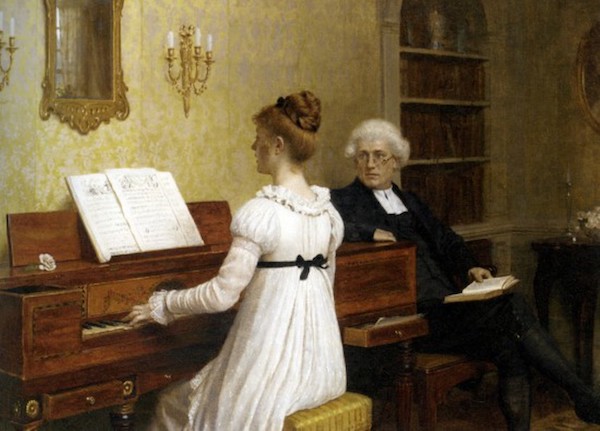
Unveiling the Romantic Music Era
Step into the realm of the Romantic music era. This was a captivating period in music from around 1830 to 1900. It was a time of intense emotion, individualism, and artistic freedom. Indeed composers of this era sought to convey deep feelings and personal experiences through their music. Quite often they embraced the idea of music as a form of self-expression.
Emotion Takes Center Stage: Music as Emotional Expression
Emotion played a central role in Romantic music. Composers aimed to evoke strong feelings and connect with listeners on a deep emotional level. They used music as a way to express their personal experiences. They would infuse their compositions with their own thoughts, desires, and struggles.
Expressive Melodies and Dynamic Artistry: The Heartbeat of Romantic Music
Romantic composers favored long, flowing melodies that allowed them to explore a wide range of emotions. They used dynamic markings (like loud and soft) more creatively than before. They would also use using sudden changes in volume to create dramatic contrasts and intensify emotional impact.
Music with a Story: Programmatic Narratives
Programmatic music is where a piece of music tells a specific story or conveys a specific idea. It became popular during the Romantic music era. Composers like Hector Berlioz and Richard Strauss crafted pieces like “Symphonie fantastique” and “Also sprach Zarathustra” used music to narrate stories and evoke vivid images in the listeners’ minds.
National Identity and Folklore: A Musical Tapestry
Many composers of the Romantic era drew inspiration from their own national identities and folk traditions. They incorporated folk melodies, rhythms, and themes from their respective countries. So this contributed to the development of distinct national styles in music.
Orchestral Enchantment: Expanding Soundscapes in Romantic Music
The Romantic era saw the expansion of the orchestra, with more instruments and larger ensembles. Composers sought to create lush and rich harmonies. As well as this they experimented with new chord progressions and orchestration techniques to achieve grand and emotional soundscapes.
Piano Virtuosity: A Piano Showcase
The piano continued to be a prominent instrument in the Romantic music era. Composers like Frédéric Chopin and Franz Liszt were pushing the boundaries of piano technique. They created music that demanded exceptional skill from performers, with intricate melodies, rapid scales, and expressive passages.
The Maestros of Emotion: Renowned Composers and Works
The Romantic music era introduced us to exceptional composers such as Ludwig van Beethoven, Franz Schubert, Johannes Brahms, Pyotr Ilyich Tchaikovsky, and Gustav Mahler. Their compositions ranged from symphonies and operas to lieder (art songs) and piano works. All of these contributing to the rich tapestry of Romantic music.
Balancing Intimacy and Grandeur: The Two Faces of Romantic Music
Romantic music could be deeply introspective and intimate. That can be seen in solo piano pieces and chamber music. It could also be grand and expansive, exemplified by monumental symphonies and operas that filled concert halls and theaters.
Conclusion: Captivating the Heart of Music
The Romantic music era was marked by its focus on emotion, individual expression, and artistic innovation. As such, composers used music to tell stories, convey their innermost feelings, and explore the depths of human experience. This era left behind a legacy of deeply moving compositions that continue to resonate with audiences. These compositions capture the essence of human emotions and the boundless possibilities of artistic imagination.
If you want to read more then ClassicFM have a good beginners guide to Romantic music.